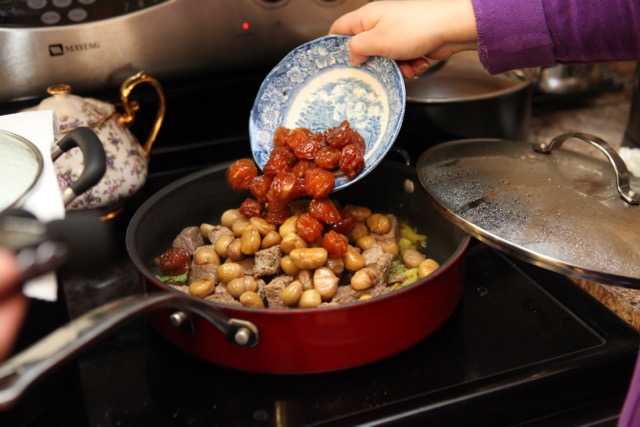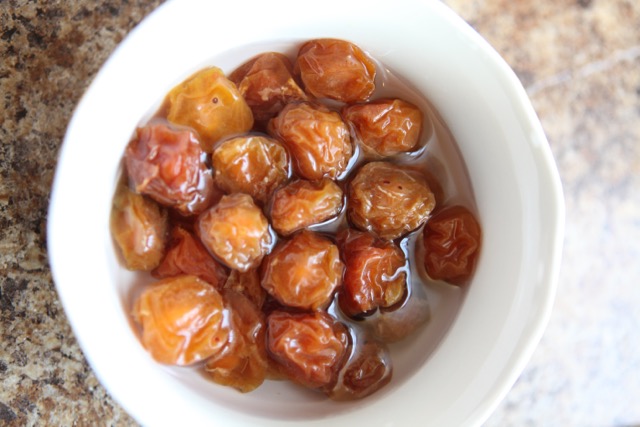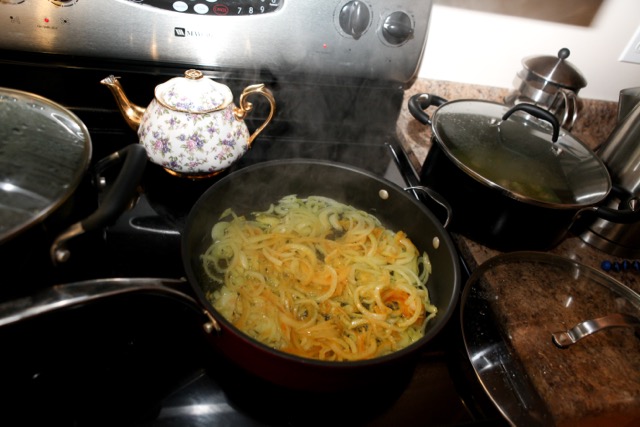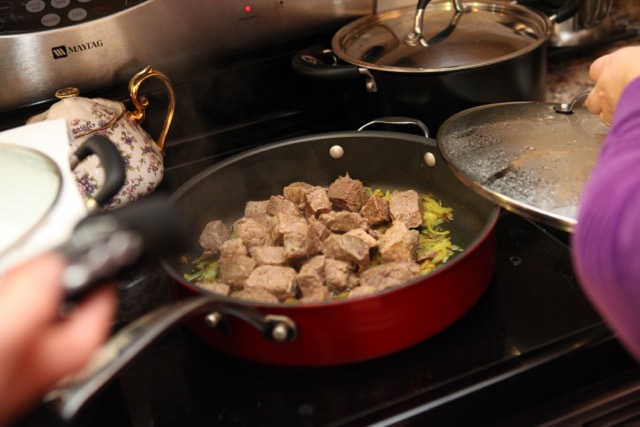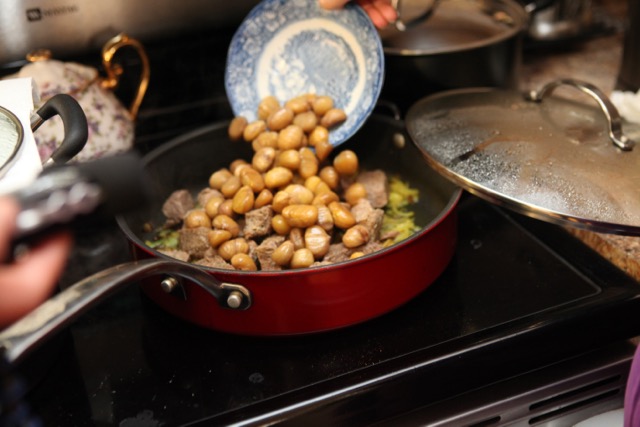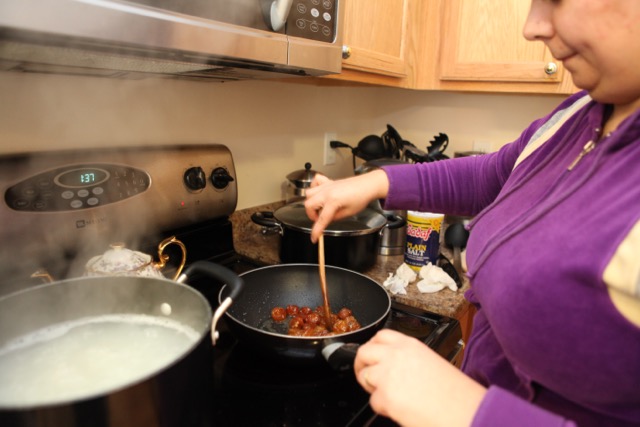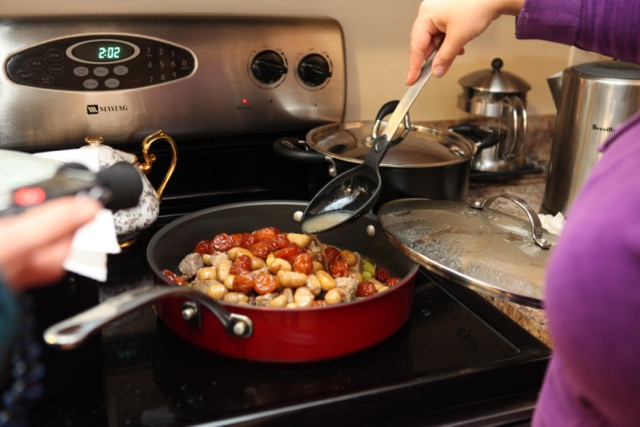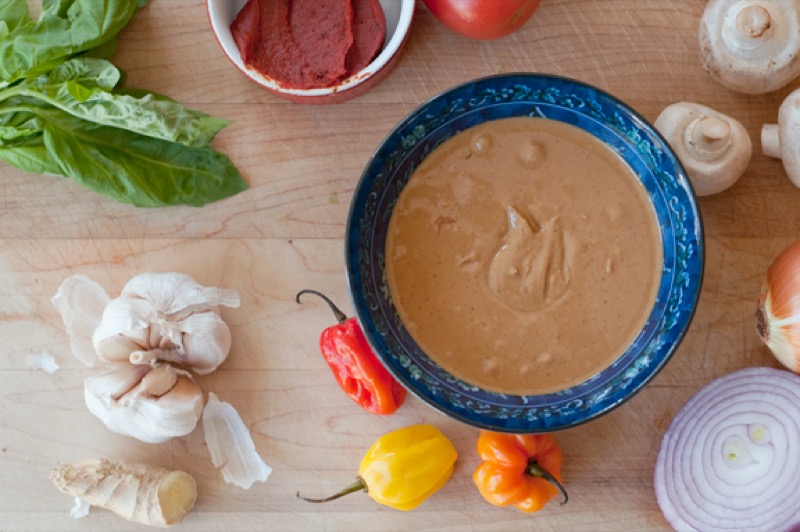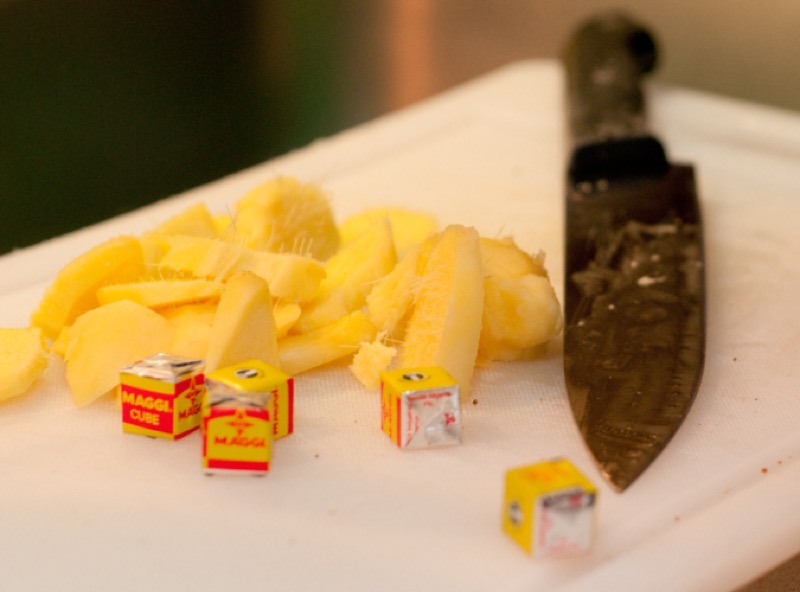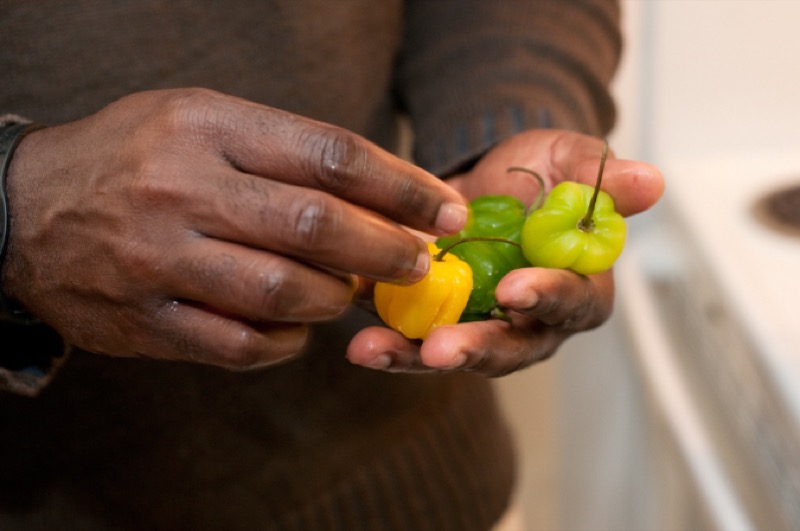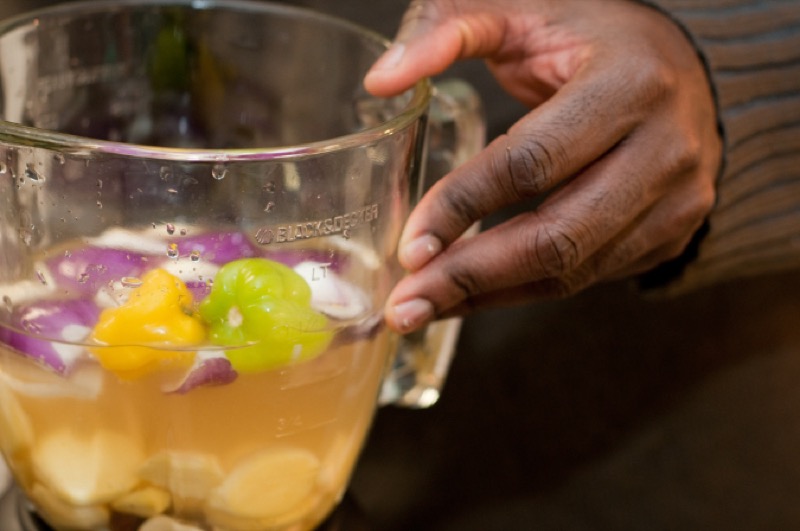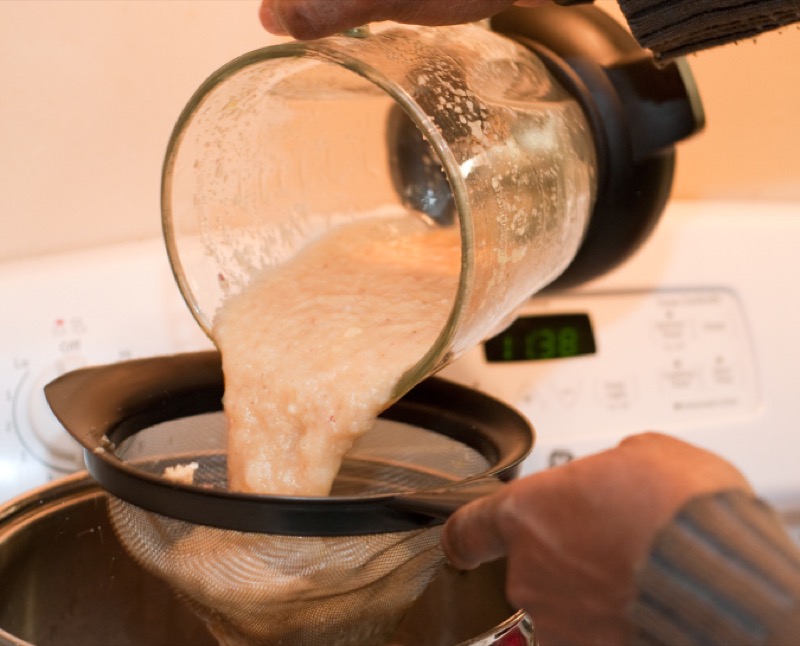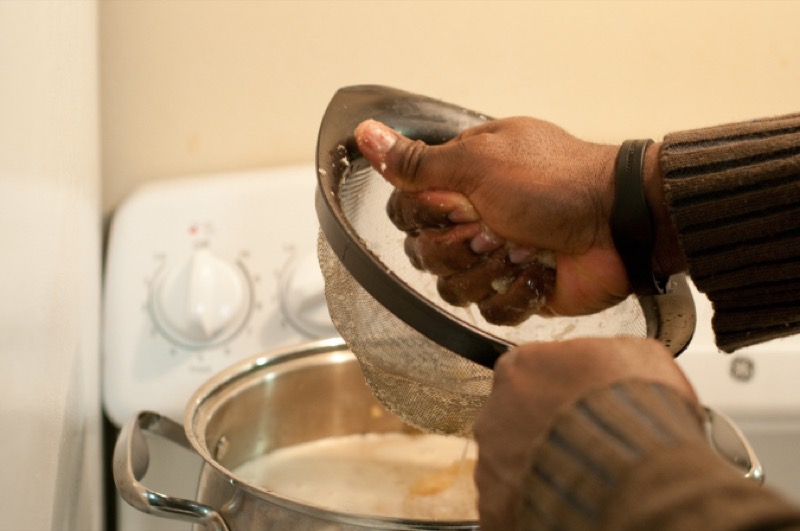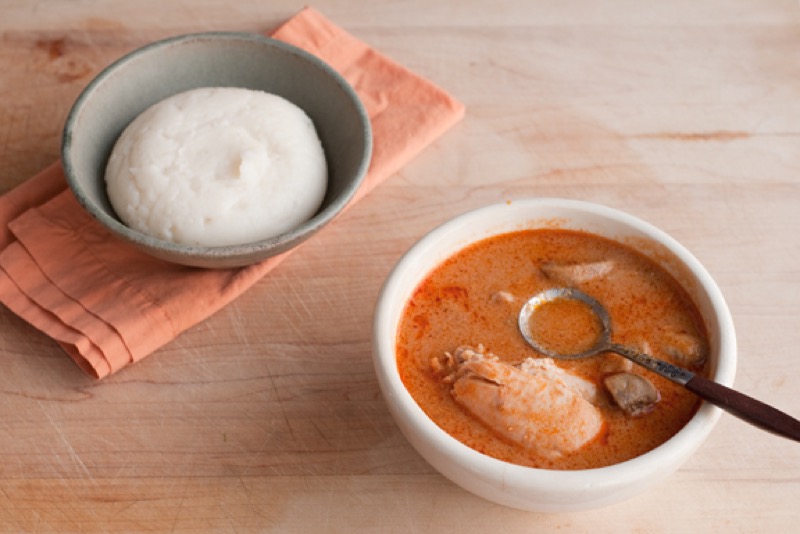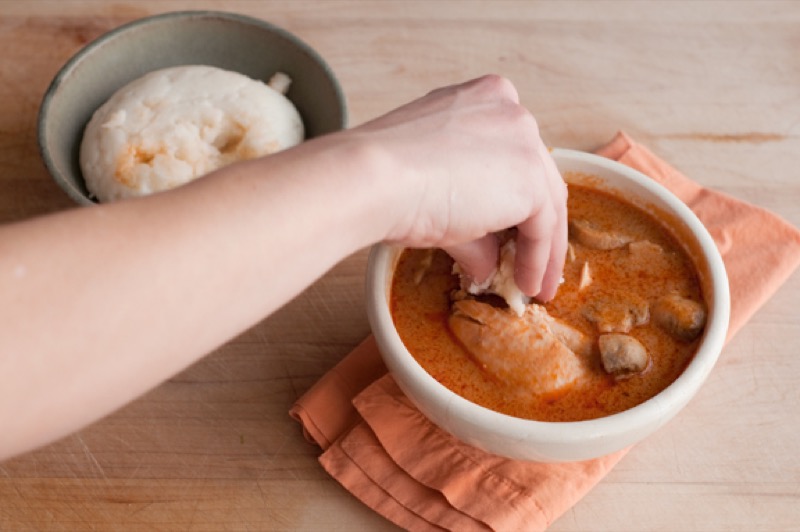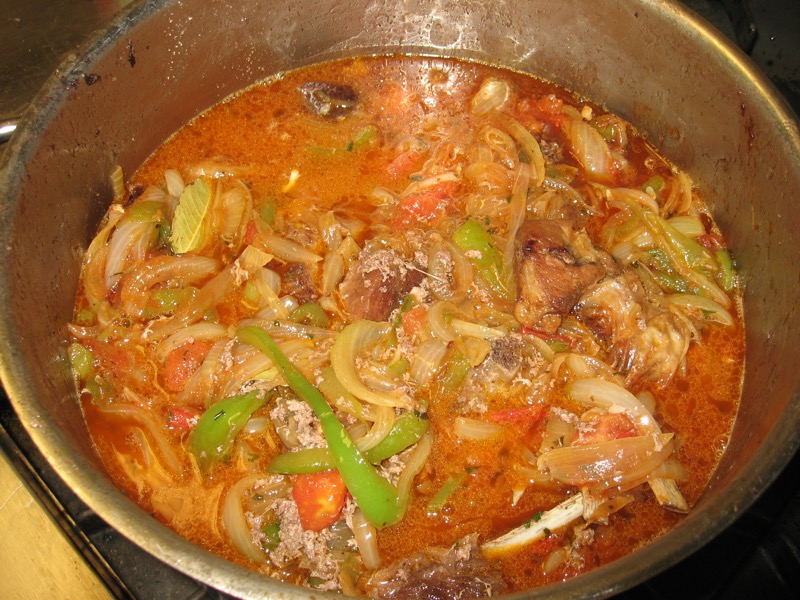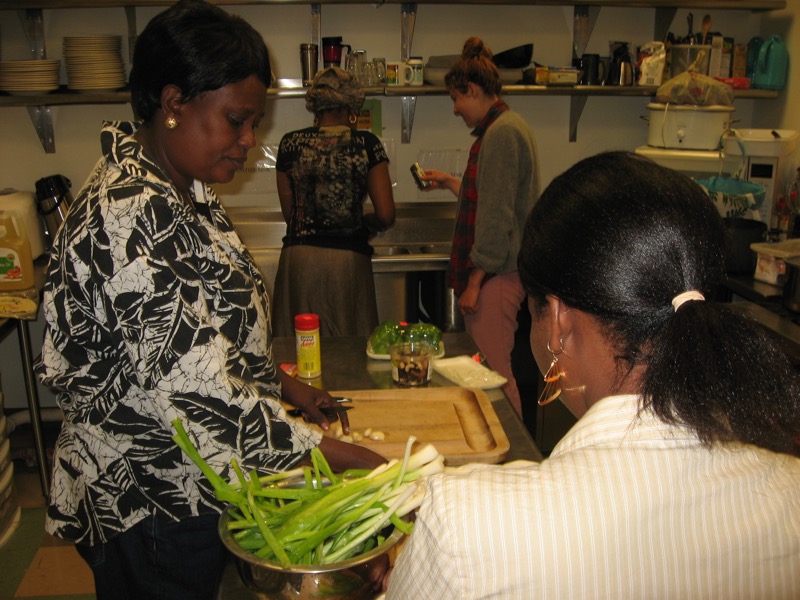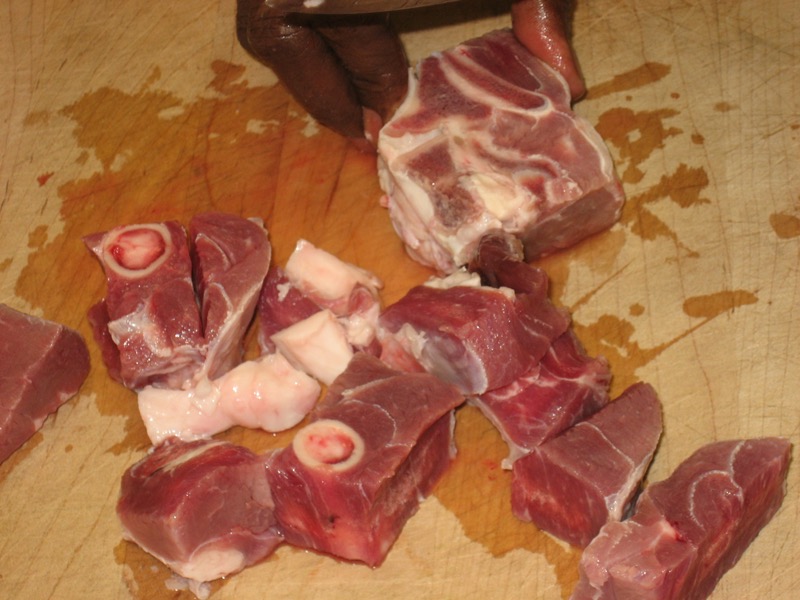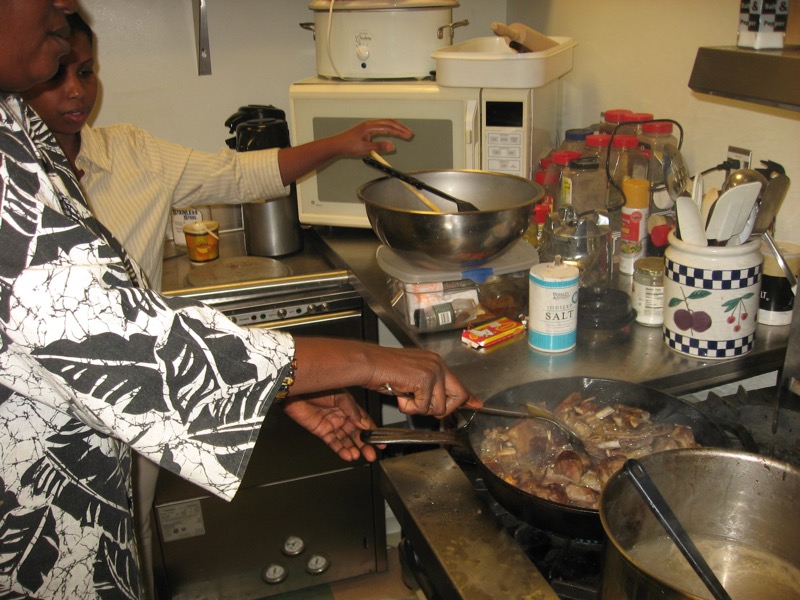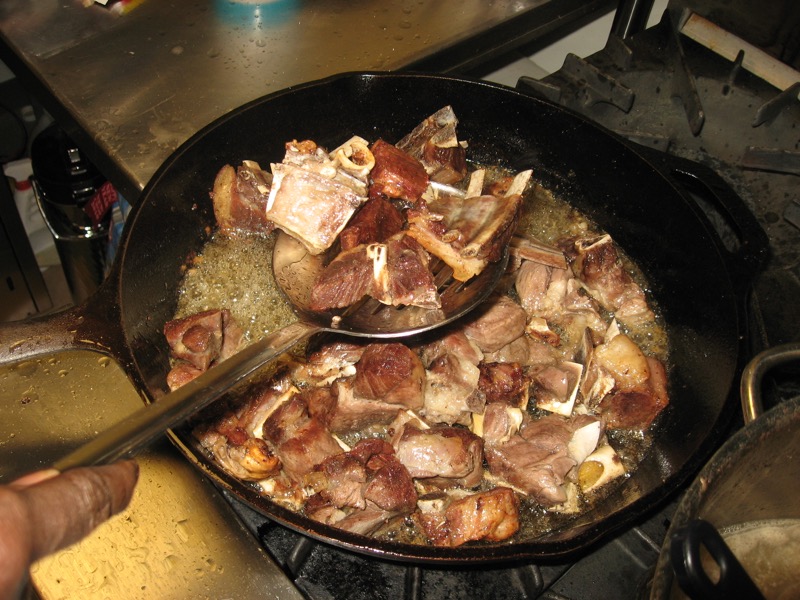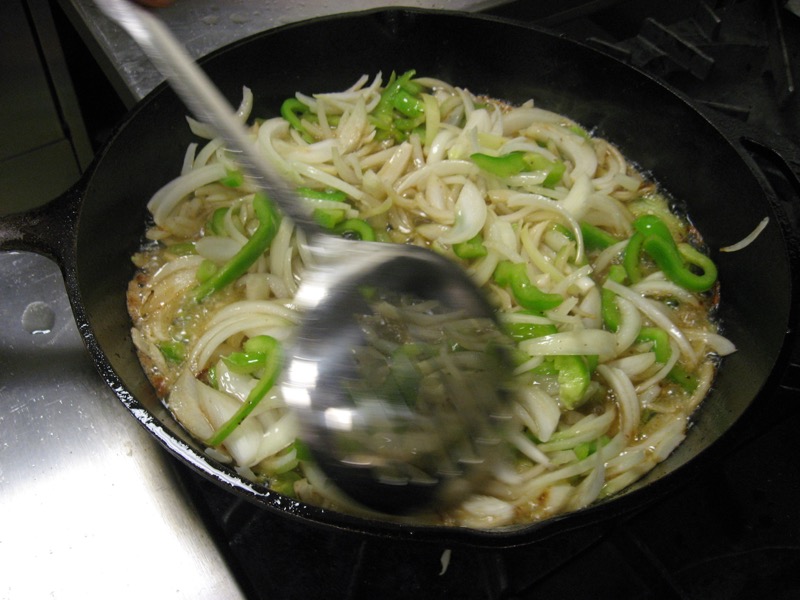Sancocho de Gallina
As Leanor McGinn from Bogota, Colombia, taught Lindsay Sterling in Durham, Maine, June 2015
Note: Find culantro, plantains, and yuca at Latin or tropical international markets. If you can't find those ingredients, use cilantro to replace culantro and use extra potatoes and corn to replace the plantains and yuca (pronouced YOU-Kuh).
Cooking time: 1 hour
Makes: 8 servings
Ingredients
- 1 green pepper
- 2 yellow onions
- 1 head garlic
- 1 bunch culantro or cilantro
- 1 whole chicken, cut into 8 pieces or 8 country style chicken pieces
- 2 medium potatoes, peeled and cut into 1 inch chunks
- 2 green plantains, peeled (see how-to-video) and cut into 1 inch segments, then halved lengthwise
- 48 oz. chicken broth
- 1 lb. yuca, peeled, cut into 3 inch long segments, and quartered lengthwise (you can buy this already peeled and frozen), or buy it fresh and peel it yourself
- 1/4 green cabbage, cut into 1-inch thick chunks
- 2 stalks celery cut into 1/4" pieces
- 2 carrots cut into 1/4" pieces
- 3 Tbsp sofrito (see step 1 below)
- 2 tsp season salt (or blend of sea salt, dehydrated onion and garlic, coriander, black pepper, celery seed, allspice, ginger, red pepper, oregano, basil, thyme, paprika)
- 2 whole ears of corn, shucked and cut crosswise into four sections each
- 2 ripe avocados
- 2 cups white rice (optional)
Instructions
1. Blend green pepper, onion, garlic and all but a small bunch of culantro or cilantro in blender. Try to add as little liquid as possible (if any) to get the blender moving. Reserve 3 Tbsp of the blended mixture, called sofrito, for making this batch of soup and freeze the remaining sofrito in 3 Tbsp portions for making soup (or rice dishes) in the future. You can fill ice tray cubes or make dollups on a sheet pan or plate. Once frozen, transfer frozen sofrito into Ziploc bag.
2. In a large pot cover chicken pieces with chicken stock and enough water so that liquid is at least 3 inches deep over the top of the chicken. Put pot on high heat. Add sofrito, yuca, plantains, carrots, celery, and season salt. Simmer until chicken is cooked or opaque throughout (about 30 minutes) and then remove the chicken pieces from soup. Add the potatoes. After about ten minutes, add the corn pieces. When the potatoes are soft, add chicken pieces back to pot.
3. Remove the large pieces of yuca from the pot, and place on a cutting board. Cut the yuca in half lengthwise. Remove and discard the hard fiber running through the center of the yuca root. Cut lengthwise again into smaller pieces and return to the pot.
4. Season the soup to taste. Garnish each bowl with pieces of avocado and fresh cilantro leaves.


















